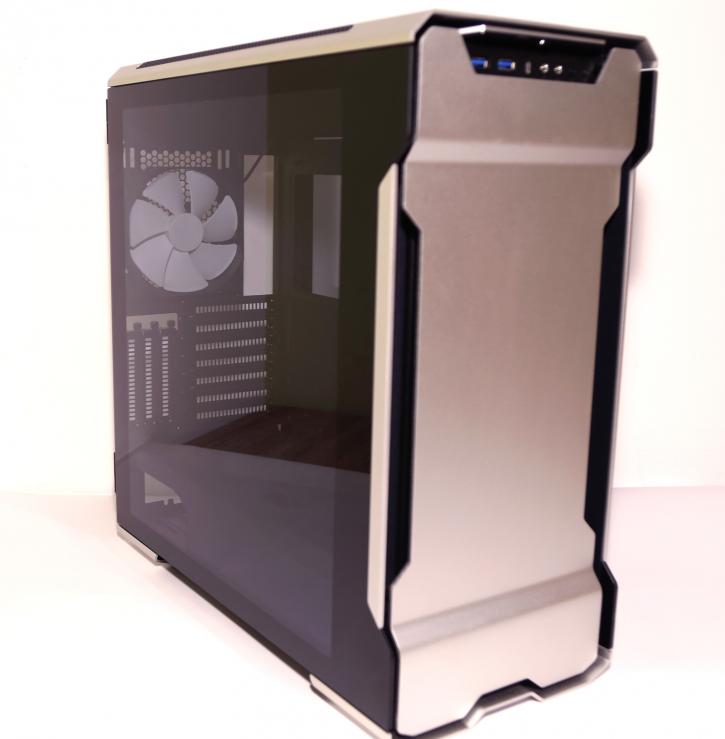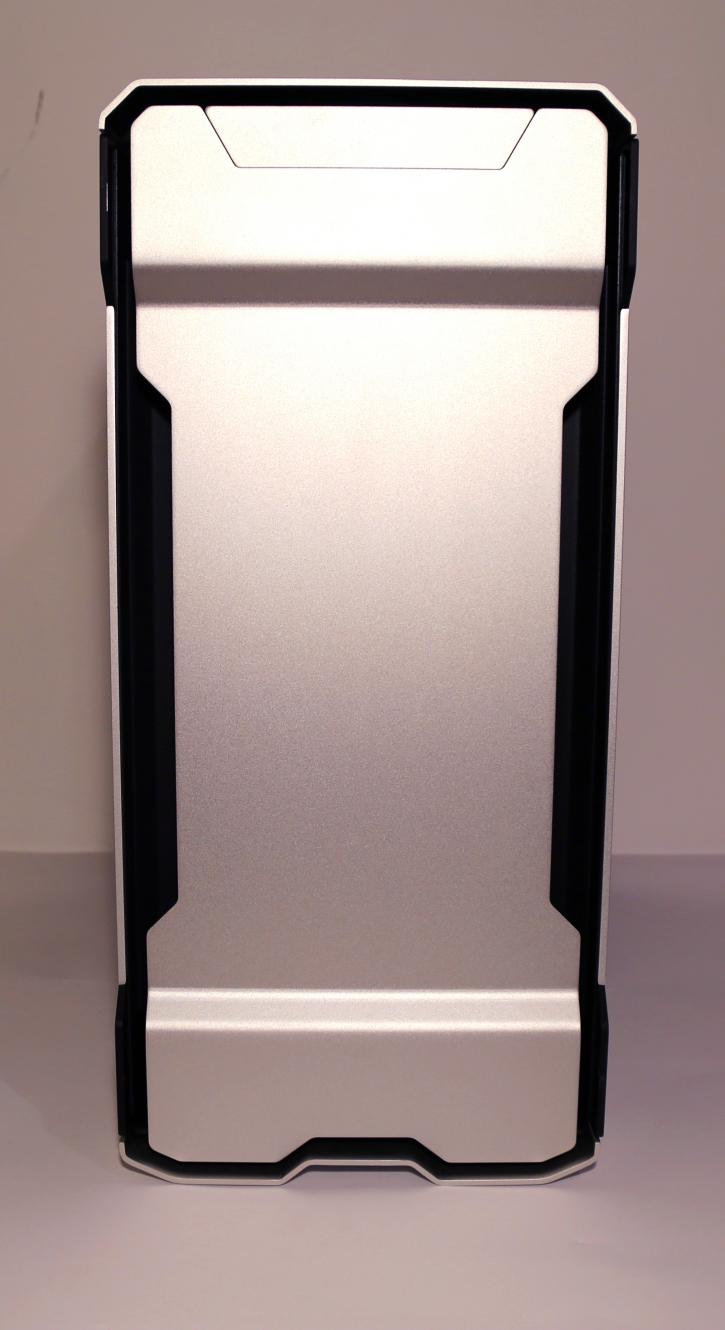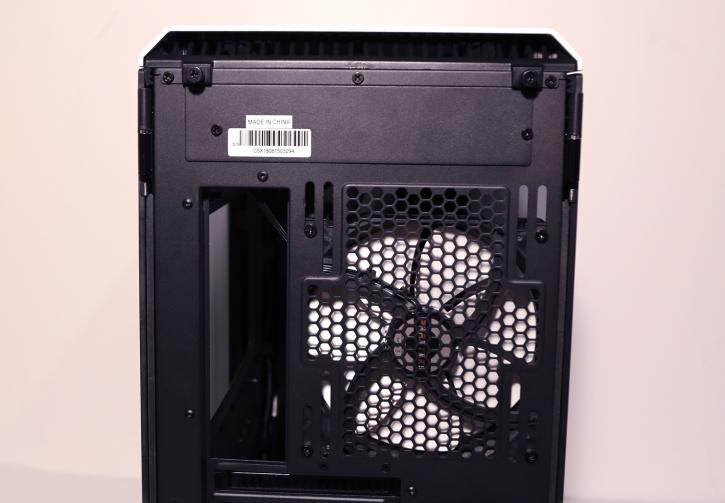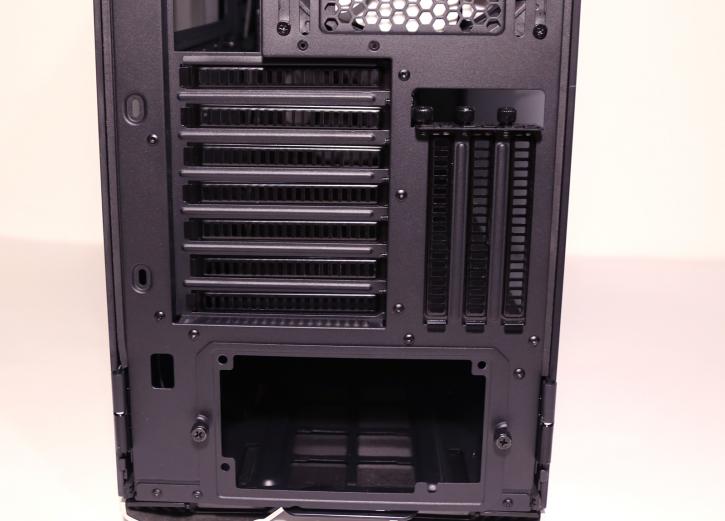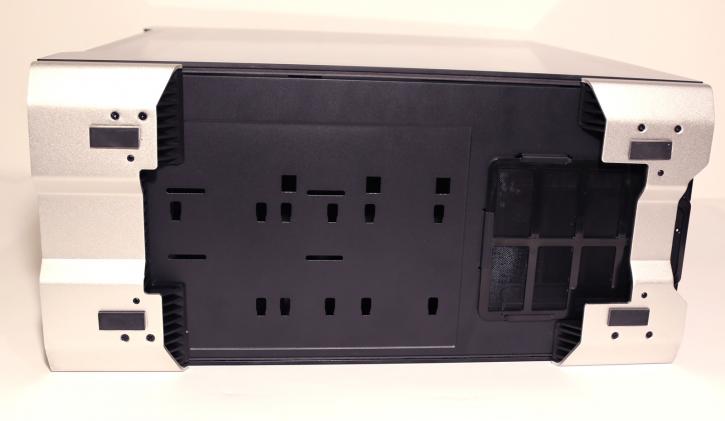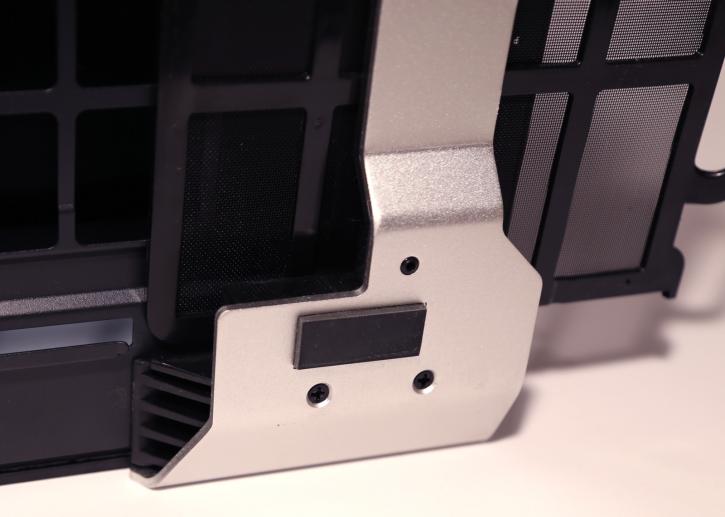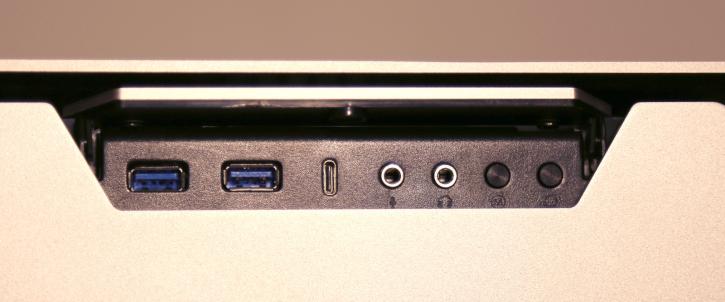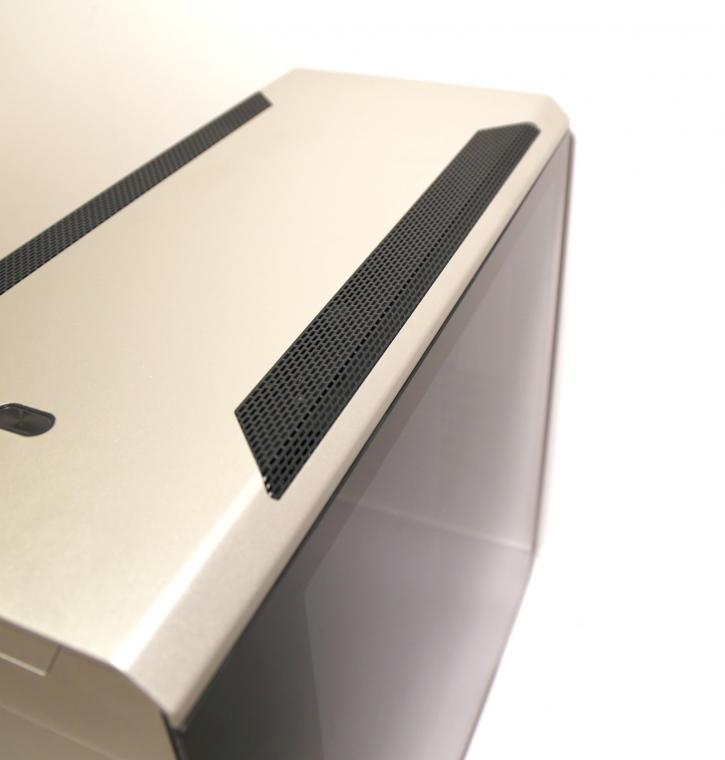Product showcase – exterior
Both side-panels look very similar with the tempered glass piece put inside. Luckily, there are no thumbscrew for securing the TG. We’d like to remind you the basic specs here – this chassis weighs about 15 kg, due to the sturdy aluminium frame and two tempered glass panels. The body is silver, which is a welcome departure from the common black. At 240 x 520 x 520 mm (WxHxD) / 9.44 x 20.47 x 20.47 inches, the size is a bit above average for today’s standards. The following motherboard form factors are supported:
- E-ATX (full one, meaning 305 x 330 mm/12 x 13”, not ones like 30.5 x 27.5cm/12”x10.8”),
- ATX,
- M-ATX,
- Mini-ITX
The weight of the Evolv X is significant (again, it’s over 15 kg), and it does make the chassis very stable (especially with all the hardware installed). When you look at the top, you’ll see some nice vents for the air coming out from the chassis.
At the back, we can see 7 horizontal and 3 vertical expansion slots, so in a traditional (horizontal) setup it’s possible to have dual-slot cards in Crossfire or SLI mode.
The PSU frame is removable (and held in place by two thumbscrews), which makes it easier to install a unit. The rear fan mount is not fixed, so it is possible to adjust the 120/140 mm fan/radiator mounting height.
When you look at the bottom part, you’ll find very, very nice aluminium feet that have been rubberized. This allows the PSU to catch a breath with ease.
The provided dust filter is relatively small and serves its purpose only for the power supply unit. It’s easily removable (pulled to the back) for maintenance.
You’ll find a standard I/O panel on the front of the chassis (not on the top like in most cases nowadays). That’s a good solution also for people who will put the Evolv X on their desk (rather than under it), as it’ll make it easier to reach the ports. Speaking of which, you’ll find two USB 3.0 ports, a single USB 3.1 Gen2 Type-C port (that’s a nice addition), audio jacks, and two buttons for controlling the chassis’ lighting. One of the latter can be used to cycle through lighting modes.
The top part contains mesh ventilation on both sides, running for about 2/3 of the total length, and also a power-on button. The holes in the mesh are quite big, so they shouldn’t obstruct airflow.

